Asset Allocation Quarterly: How much further for inflation and interest rates?
Summary
How will it end? This year has confounded many investors and even central bankers. The global pandemic and ensuing global supply chain disruptions and unprecedented government fiscal measures, created an environment in which conventional monetary policy actions were less effective than expected. Despite the resiliency of the global economy (and U.S. economy specifically) so far, the lagged effect of tighter monetary policy is likely to finally deliver that long awaited recession in the first half of 2024.
We anticipate mild recessions in both Canada and the U.S. While Canada has already experienced modest GDP contractions in both 4Q22 and 2Q23, the U.S., on the other hand, presents a more hopeful picture of a soft-landing scenario, buoyed by its resilient economy, robust consumer consumption, and significantly government spending. However, we still foresee the U.S. facing some contraction, at least in the first half of the next year, due to the slowing global economy and domestic pressure from higher interest rates. There is also a slight possibility that the recession could be more severe than our base case, considering the prolonged duration of the yield curve inversion, which has lasted for ~390 days, just exceeding the one before the 2008 Great Recession.
With recessions, we expect inflation relief, allowing the easing of policy rates and more stable financial markets. We foresee policy rates starting to decline in 2024, although more likely into the second half of the year and perhaps only in 2025, depending on how inflation, the economy, and employment data play out.
Key Takeaways:
- North America’s Economy: Resilient Yet Challenged – North America's economy has proven to be more resilient than expected so far this year. Labour markets remain tight, and there has been continued strength in retail sales. However, efforts to slow the economy are beginning to take hold, with already slight GDP contraction in Canada. High household debt levels and increasing mortgage payments have helped to curb Canadians’ spending habits, while in the U.S., there is growing consumer debt, and major package carriers are experiencing slowdowns.
- Rates to Stay Higher for Longer – While we are likely near the end of rate hikes, we remain cautious about the prospect of one more minor rate hike, in each of Canada and the U.S. A resurgence in inflation remains the biggest concern for policymakers in both countries, forcing central bankers to keep potential increases on the table.
- Stay Invested - Timing market tops and bottoms is exceedingly difficult, if not impossible, and markets can react quickly at, or ahead of, the first signs of an improving economy. Staying invested in the right assets for your long-term objectives and risk tolerance is usually the most prudent approach.
- Opportunities in Fixed Income - The high interest rate environment has created opportunities in fixed income markets that we haven’t seen in decades in both the U.S. and Canada. Fixed income investors are poised for a dual benefit. Not only are yields now more comparable to equity returns, but a rate reversal could provide additional gains as bond prices appreciate. Extending duration may benefit investors.
- Equity Positioning - When excluding the mega-cap tech stocks that have driven index performance in the U.S., returns have been quite muted, yet volatile. We would maintain a balance between the U.S. and Canada. We also favour a defensive posture given our base case of mild recessions in the first half of 2024.





